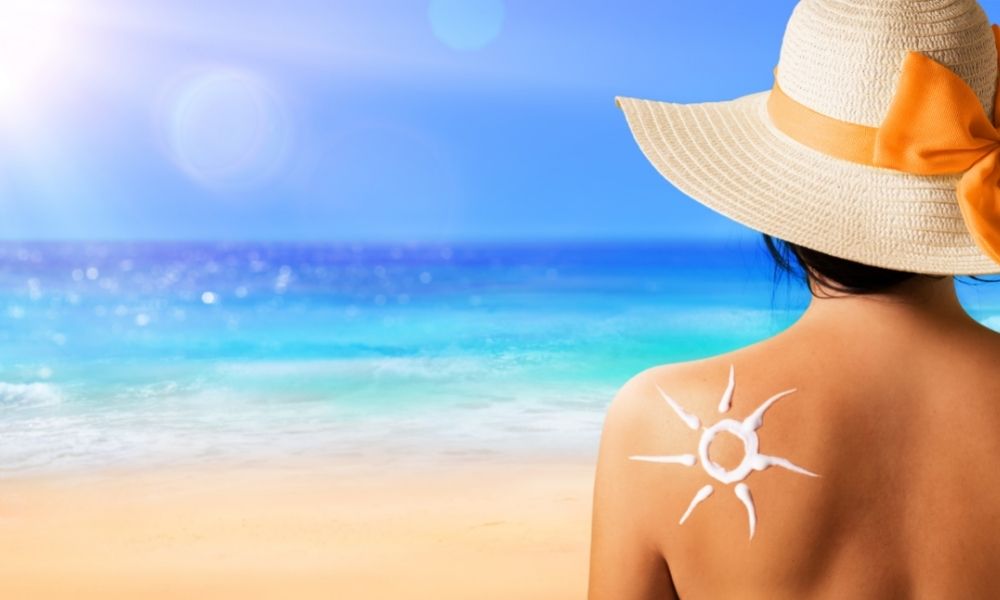
I recently returned from a fabulous trip to the beach where the weather was perfect, and the waves were sublime. I’ve been on earth long enough to know that it only takes one bad sunburn to ruin a vacation, so the one item that I made sure to bring with me was a bottle of sunscreen.
While picking out my sunscreen, I made sure that it checked all of the boxes. It mentioned something about UVA and UVB rays. It was a broad-spectrum lotion with an SPF of 50. And last but not least, it was labeled as very water-resistant. I knew my sunscreen checked all of the essential boxes. But just why are those boxes all so important? Hopefully, by the time you finish reading this article, you will feel confident in knowing what your sunscreen does for you.
Ultraviolet Rays & Broad Spectrum
Sunscreen is important because it protects our skin from the ultraviolet (UV) rays that are emitted from the sun. Did you know that there are two types of UV rays that are harmful to your skin? They are UVA and UVB rays.
- UVA Rays – These rays penetrate deeper into the skin than UVB rays. The “A” points to the effect that these rays have on aging. Because these rays penetrate deeper into the skin, they cause skin damage that leads to tanning, aging, and wrinkles. The shortest of the UVA rays can also contribute to sunburn.
- UVB Rays – These rays mainly cause damage when penetrating the outermost layers of skin. They are the rays that are responsible for sunburns. The “B” in UVB refers to the burning effect that these specific rays have. UVB rays are the rays that play a key role in developing skin cancer. The SPF number on your sunscreen directly correlates to the amount of UVB protection it serves.
That brings us to the fact that you want your sunscreen to be broad spectrum. When a sunscreen is broad-spectrum, that means it protects against both UVA and UVB rays rather than just one or the other.
What is SPF?
The letters SPF stand for “Sun Protection Factor.” The Skin Cancer Foundation explains that the SPF number tells you how long the sun’s UV radiation would take to begin to burn your skin when using the product directly as instructed versus the time without using sunscreen at all. They state that “ideally with SPF 30 it would take you 30 times longer to burn than if you weren’t using sunscreen.”
It is important to realize that your sunscreen’s SPF is not related to the amount of time you are outside. According to the Food and Drug Administration, it is related to your amount of exposure to UV rays. The sun is stronger in the mid-morning and early afternoon than in the early morning and early evening. You should also consider geographic location, as the sun is stronger at lower latitudes.
No sunscreen will be able to block out all of the sun’s UV rays. SPF 15 can block out 93% of the ultraviolet rays, while SPF 30 can block 97% of the rays.
Water Resistant Sunscreen & Very Water-Resistant Sunscreen
It is important to understand that no sunscreen is waterproof. If enough time is spent sweating or swimming, the sunscreen will come off. That is why sunscreen is labeled as either “water resistant” or “very water resistant.” Water-resistant means that you can swim for up to 40 minutes before needing to reapply your sunscreen. Very water-resistant means that you will need to reapply your sunscreen can last up to 80 minutes before needing to be reapplied.
Sunscreen Expiration Dates
The FDA requires all sunscreen companies to put an expiration date on the bottle if it does not last up to three years. So if you buy sunscreen and can’t seem to find the expiration date, you should assume that the sunscreen will expire three years from the date of purchase. An excellent way to remember is to label the bottle with the date of your purchase.
A Couple of Reminders
Sunscreen is an important weapon to have in your arsenal when fighting against getting skin cancer. However, its protections only work if the sunscreen is used exactly as directed. The American Academy of Dermatology (AAD) says that you should use one ounce (a shot glass full) of sunscreen to cover your body and receive full protection. This is backed up by both the FDA and Skin Cancer Foundation. The Skin Cancer Foundation adds that, on average, people use less than half of the recommended portion.
You should wear SPF 15 daily and at least SPF 30 when participating in any outdoor activities. Remember to apply your sunscreen every 2 hours or more frequently if you will be sweating and swimming. You should even apply sunscreen on cloudy days. When it’s cloudy, up to 80% of the sun’s UV rays still make it to earth and can cause skin damage.
Sunscreen should not be your only protection against potentially harmful sun exposure. Remember to do your best to stay out of the sun when its rays are the strongest (10:00 am to 4:00 pm). If you are going to be outside, make sure your skin is covered as much as possible, and try to find places with a lot of shade.
Finally, those who have a history of or are at high risk for skin cancer, those with genetic disorders like albinism, or those with certain immune disorders should seek advice from a licensed medical professional. Even SPF 50 may not be enough to protect them from the sun’s harmful effects.
Everyone under the sun needs to apply sunscreen. Apply it generously. Apply it often. And have fun out there.





